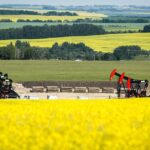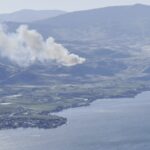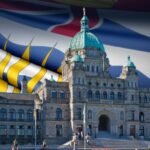The glistening snowcaps that typically crown British Columbia’s mountains have diminished to alarming levels, triggering concerns that extend far beyond recreational skiing. As of early May 2025, provincial water management officials report that snowpack levels across the province have plummeted to just 58% of normal—the lowest recorded in nearly two decades, with potentially severe implications for the province’s hydroelectric power generation capacity.
“We’re witnessing a perfect storm of climate conditions,” explains Dr. Emma Hartwell, senior hydrologist with the BC River Forecast Centre. “The combination of unseasonably warm temperatures throughout winter and significantly reduced precipitation has created a scenario where both snow accumulation and retention have been dramatically compromised.”
The impacts of this snowpack deficit are already becoming evident across the province. Several major watersheds that feed BC Hydro’s reservoirs are showing concerning trends, with the Peace River basin—home to the massive W.A.C. Bennett Dam—reporting just 49% of normal snow water equivalent. The Columbia Basin, another critical hydroelectric resource, stands at a mere 53% of historical averages.
BC Hydro, which typically generates over 90% of the province’s electricity through its hydroelectric facilities, has initiated contingency planning to address potential shortfalls. “We’re implementing strategic reservoir management protocols that prioritize long-term water conservation while maintaining essential power generation capacity,” said Michael Chen, operations director at BC Hydro. “However, if current conditions persist through summer, we may need to supplement our generation capacity with additional natural gas resources or increased imports from neighboring jurisdictions.”
The economic implications extend beyond just keeping the lights on. British Columbia’s reputation as a clean energy provider has been a significant competitive advantage, particularly for industries sensitive to carbon footprints. The technology sector, which has established substantial data center operations in the province specifically to access renewable energy, may face challenging decisions if hydroelectric reliability decreases.
First Nations communities have expressed particular concern, as many rely heavily on healthy river systems for both cultural practices and subsistence. “The water connects everything in our territories,” explained Chief Sarah Williams of the Nak’azdli Whut’en First Nation. “When snowpack fails and rivers run low, it impacts salmon spawning, medicine gathering, and our entire relationship with the land.”
Provincial officials have already implemented the first stage of drought response protocols across several regions, with water conservation advisories extending to major urban centers including Vancouver and Victoria. Agricultural producers, particularly in the Interior and Okanagan regions, are preparing for potential irrigation restrictions later in the season.
Climate scientists point to this situation as consistent with projected climate change impacts for the Pacific Northwest. “What we’re witnessing aligns with model predictions showing decreased winter precipitation falling as snow and accelerated spring melt,” notes Dr. Jonathan Patel, climatologist at the University of British Columbia. “The concerning aspect is that we’re seeing these conditions materialize earlier and more severely than many models had suggested.”
The current crisis has intensified calls for accelerated diversification of BC’s energy portfolio. While the province has made investments in wind and solar capacity, these sources currently contribute less than 5% to the overall generation mix. Energy experts suggest that this snowpack deficit might serve as a watershed moment for provincial energy policy.
As British Columbians look toward summer with mounting concerns about water availability and power generation, one question looms particularly large: is this year’s snowpack shortage an anomaly, or are we witnessing the new normal for a province whose identity and economy have been shaped by abundant water resources?


















